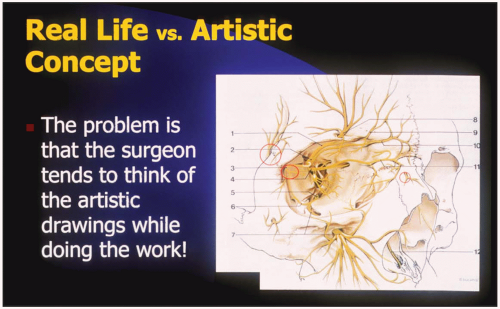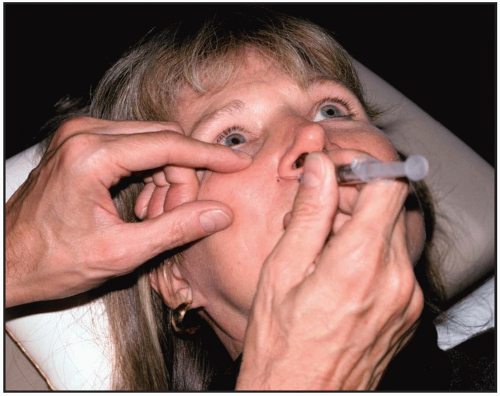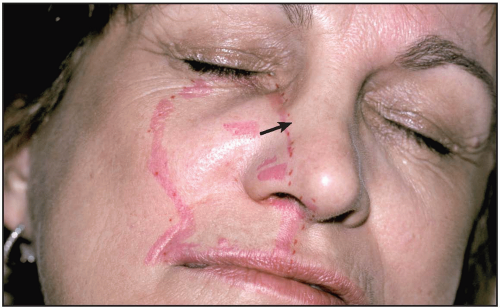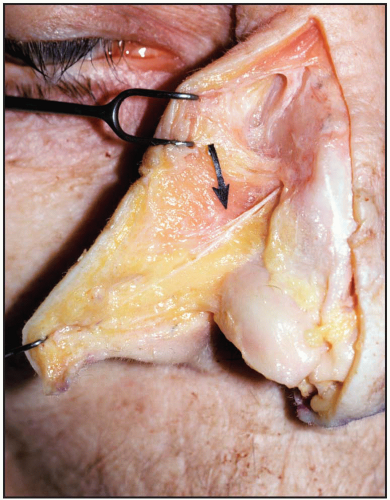Nerve Blocks 101
In a 1998 article titled “How to Block and Tackle the Face”1, I presented a system for facile nerve blocks that would allow the surgeon to be more effective and efficient with local anesthesia once the block methods were adopted. I did not show the intraoral injections (e.g., inferior alveolar nerve or the long buccal nerve course) that I use, since most nondental surgeons shy away from them. In a like manner, I avoided intraorbital blocks used by ophthalmologists. In this chapter, I have made some additions, namely, for the lacrimal nerve (which I originally omitted) and for the cervical plexus, which will extend the surgeon’s range to the neck. Furthermore, as I am not constrained by journal limitations, the exposition is much grander in photographs and schematics and, thus, easier to understand.
My fervent hope for all who read this chapter is that you immediately start to practice these blocks. Once you become proficient, you will never again directly inject the nasal tip or lip without blocking first because you will know how much it will hurt. You will block the lips in preparation for marking the white roll with needles dipped in ink. You will start performing cases with blocks and simple oral premedications and marvel at your own skills.
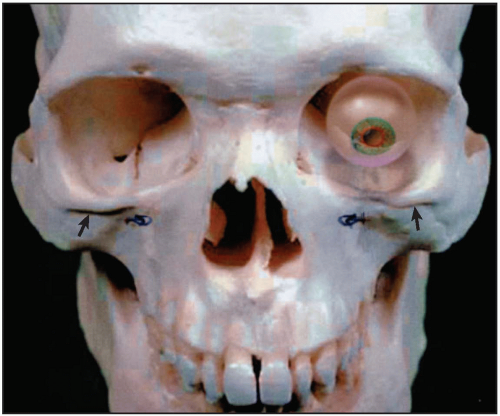 Figure 8.1 The infraorbital nerve opens downward and medially above 5-8 mm below the rim. In some cases the lower rim may have a ridge (arrows) which may be mistaken for fracture. |
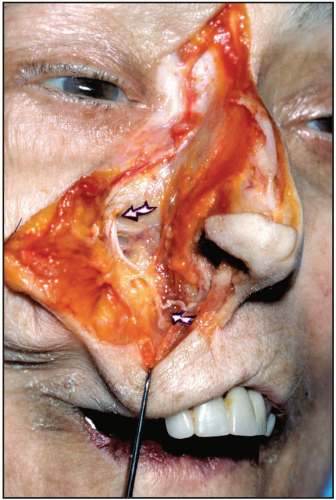 Figure 8.4 • The upper arrow shows the infraorbital exit. • The lower arrow shows a distal branch that rides over the levator to the upper lip to supply the base of the columella. |
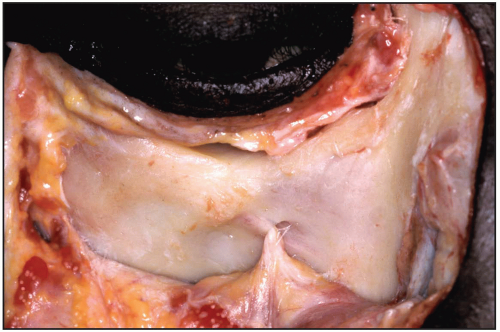 Figure 8.5 The foramen opens downward and medially, so injections to it should come from below and medial. |
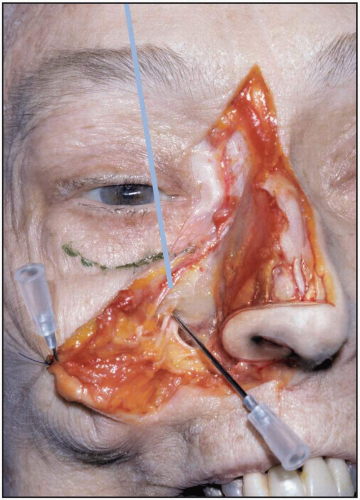 Figure 8.7 The rim is marked in green. The foramen is 5 to 8 mm down on a line from the medial limbus. |
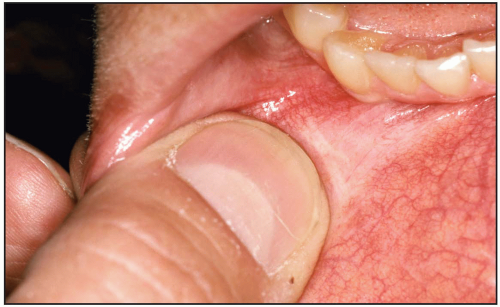 Figure 8.13 Top: Dental professionals are taught early on the method of blocking the inferior alveolar nerve as it enters the lingula on the medial surface of the ramus. In addition, the long buccal nerve may be injected behind the third molar along the lower ramus, which will affect the cheek. Some physicians—e.g., some surgical dermatologists, plastic surgeons, and otolaryngologists—may feel better operating more toward the surface. The sensation of the entire lower lip from commissure to commissure depends on blocking the mental nerves. Usually three or four branches exit the mental foramen about the apex of the first or second bicuspids, but this varies. The 2-3 lip branches that block from the labiomental fold to vermilion can be effaced with the thumb for easy visualization. A third branch, and sometimes others through bone, supplies sensation to the chin pad; however, in many cases, a sensory branch off the mylohyoid nerve supplies a quarter-sized area of the chin pad on each side. Therefore, the pad will need additional supraperiosteal injection, as will be shown.
Stay updated, free articles. Join our Telegram channel
Full access? Get Clinical Tree
 Get Clinical Tree app for offline access
Get Clinical Tree app for offline access

|
